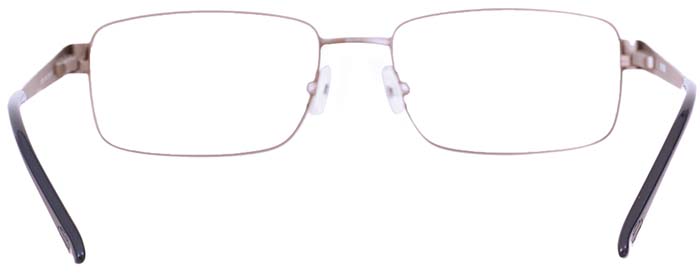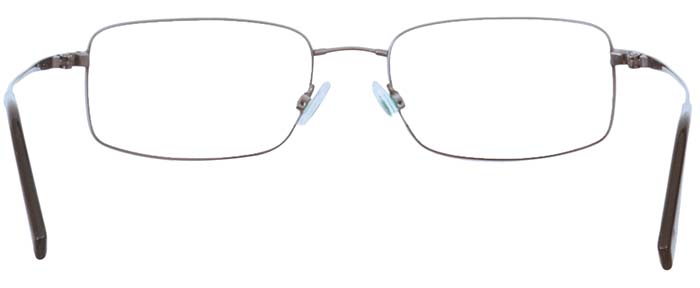By Alton P. Chiu
About 4% of the worldwide population is visually impaired, so it is natural to adapt eyeglasses to aid marksmanship. Bullseye pistol shooters use a wireframe with a near focus lens tuned to the front sight for the dominant eye and occlusion of the other eye. However, they are not ideal for action matches (e.g. IPSC) or field use. This vignette explores how to adapt regular eyeglasses for “run-n-gun” purposes, namely the importance of optical center placement and options such as coating and materials.

Optical Center
The lens optical center is where light passes through without changing direction and causing distortions. When ordering glasses, opticians align the optical center with the everyday pupil position for best clarity during daily use. The problem arises from the fact that the everyday pupil position could be mismatched with the standing, sitting, and prone shooting positions. This misalignment causes distortions, blurred image, and color fringing that degrades accuracy and consistency of the sight picture.
Differing shooting positions utilize different parts of the eyeglass lens. Offhand and sitting rifle positions, as well as isosceles pistol stance, all share a similar pupil position, whilst the prone rifle position can place the pupil higher. Although keeping one’s head upright is good practice, that can prove challenging with the prone position especially on rifles with nonadjustable buttstocks. As a compromise, the author chose to average the pupil position of his sitting and prone rifle positions to achieve acceptable clarity across various situations.
Different rifles can also give different pupil position as the distance between the stock comb and the sight plane, aka Drop at Comb (DAC), can alter the head position. Open-sighted rifles such as Mauser 98s can have low DAC, leading users with longer faces to tilt their heads forward in order to align with the sight plane. This can position the pupil higher up on the lens. Modern rifles such as AR-15s, especially with a tall sight plane such as a lower-1/3 co-witnessed red dot sight, can have tall DAC. The resulting head-up stature can help limit pupil position shift between shooting positions. Because the sample of individuals the author surveyed all have different pupil position shifts, it is imperative for each to experiment and adjust the optical center to fit.

Frame
A wrap-around frame with large lenses provides good protection but it can complicate the lens construction. Lenses with more curvature will have thicker edges in order to achieve the prescription. In addition, the curvature makes the lens more susceptible to being dismounted from the frame, especially in a very flexible frame. Lastly, the author learned from an HK G3 that tight gripping temple tips are necessary to prevent the glasses from shifting under recoil.
Lens
Polycarbonate is safer than glass as lens material. For coatings and options, the readers should consider UV protection, polarizing, anti-glare, tinting, and scratch-resistant coating. Since most shooting sports are likely outdoor events, UV protection is necessary to reduce the chances of developing cataracts or suffering retina damage. Polarized lenses can help to discern difficult-to-see targets by reducing glare and increasing image contrast. Note that while polarization does not imply UV protection, most polarizing coatings do include UV protection. Anti-glare coating helps image quality by reducing the amount of light reflecting off the front of the lens which reduces image brightness. Lastly, a scratch resistant coating protects against abrasion from blowing sand or poor cleaning practices.
Tinting both protects the eyes and improves image quality by reducing the amount of high intensity light with 70-80% reduction being common for outdoors. However, reduction appropriate for a midday sun may prove a hindrance at dawn or dusk. Transition lenses remove this dilemma by making the reduction proportional to the incident light. Note that it is inadvisable to use tinted lenses without UV protection as the dilated pupil admits more radiation.
The choice of tint color aids target distinction by lightening analogous colours and darkening complementary colours. Neutral grey tint only reduces light intensity. Yellow tint is popular with clay shooters as it darkens the blue sky and lightens the orange clay pigeons. However, it is difficult to dramatically reduce light intensity with yellow tint without color distortion. Meanwhile, brown is a versatile tint color that improves depth perception via chromostereopsis by enhancing the contrast between red and blue. Personal preferences and intended application drive the tint color choice.
Conclusion
The difference in pupil position between everyday use and various shooting positions can be overcome by a tailored pair of prescription glasses appropriate for action matches or field use. The optical center of the lens should match the pupil position behind a firearm, and lens area big enough for good protection. The temple tips should form a tight grip. One should consider polarizing, anti-glare, and scratch-resistant coatings while the inclusion of UV protection should be a foregone conclusion. The lens should be made of polycarbonate for safety and tinted to enhance the sight picture. A properly tailored pair of glasses can reduce eye strain if not improve score.
| This article first appeared in Small Arms Review V20N7 (September 2016) |










